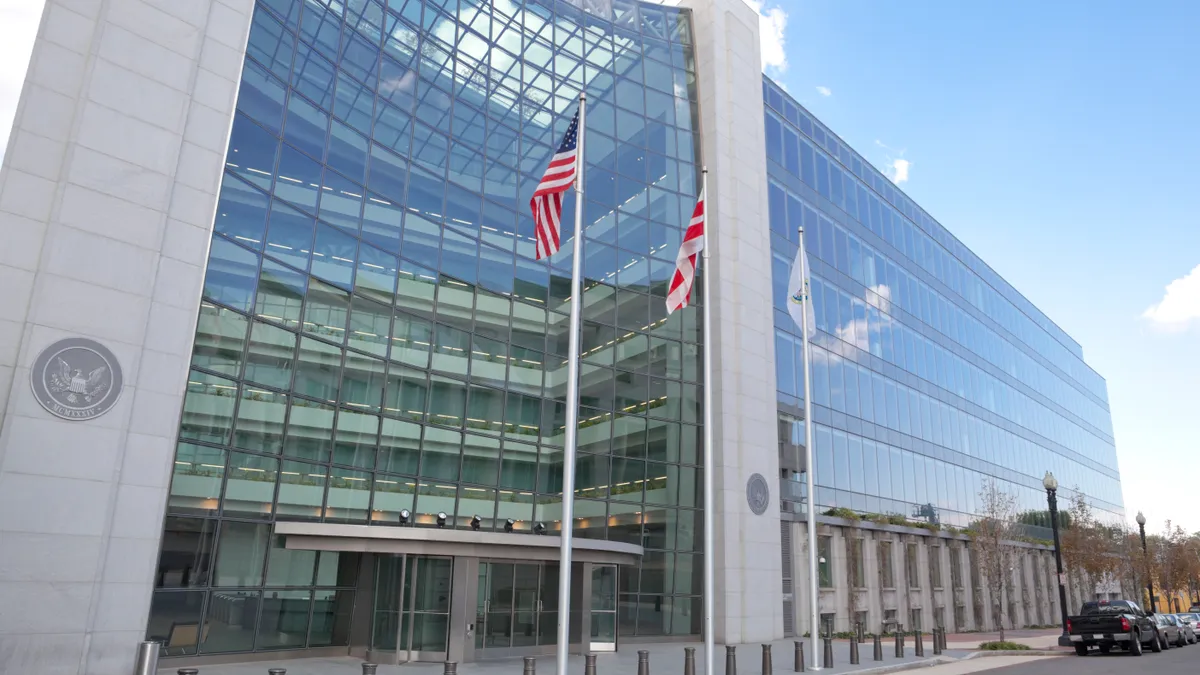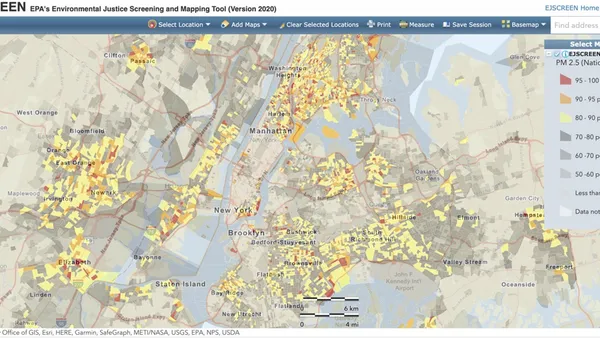Public companies are waiting to see when and how the Securities and Exchange Commission makes its proposed environmental, social and governance disclosure rules final. But private companies can’t ignore what comes out if they’re part of a covered company’s value chain or if they’re thinking about going public in the near future, a specialist on the matter said.
“If the private company is within the value chain, upwards or downwards, of a company that has to provide the Scope 3 metric in their report, they will be asked to help provide that information,” said Julie Rizzo, a partner in the capital markets group of K&L Gates. “They’ll roll up into that company’s Scope 3 emissions that have to go into their SEC reporting.”
Scope 3 refers to greenhouse gas emissions from companies that help a covered company make money, either by being part of its supply chain or providing other value-added services. And whether or not they are subject to SEC reporting requirements themselves, they are expected to cooperate with the covered company. That means measuring and sharing the emissions that stem from their work for that company.
“So, you’re going to have companies that aren’t necessarily thinking that they would be covered by this rule having to provide information to companies that need to provide that information,” Rizzo said.
Heavy emissions
By some estimates, Scope 3 emissions are the biggest source of greenhouse gasses and that can help account for why the SEC would want companies to include them in their reporting.
A financial institution, for example, might have little to report under what are known as Scope 1 and Scope 2 emissions, which refer, respectively, to emissions generated directly by the company and those generated indirectly, through carbon trading, for example. But a manufacturing company that has taken out a loan with the financial institution could be a big source of emissions, and that would be covered under Scope 3.
“The financial firm bears a share of responsibility and risk for those emissions based on its investment in a company,” said Alexandra Thornton, senior director of tax policy at the Center for American Progress.
Not all public companies will have to report Scope 3 emissions in the proposed version of the rules.
If it’s a smaller reporting company, defined as one with less than $250 million in public float or that has less than $100 million in annual revenue plus a public float of less than $700 million, or a larger company whose Scope 3 emissions are considered immaterial or hasn’t included Scope 3 emissions in their reduction targets in the past, the emissions don’t have to be reported.
Even so, some companies must be careful because the SEC has indicated it plans to take a broad approach to determine how a company has conveyed its reduction targets in the past. A company that hasn’t published reduction targets in, say, a sustainability report it gives to investors could still be thought to have done so if it talked about them elsewhere.
“The SEC is looking at tweets, social media that people put out … even talking about a statement made in a webinar,” Rizzo said. “So, one of the things it’s helpful to think about, as they’re thinking about ESG strategy and their disclosures, is how they’re putting information out there publicly.”
Resilience strategy
The SEC is taking comments on disclosure rules until later this month with the goal of releasing a final rule at some point, possibly later this year.
The rules are part of an effort to help investors and other stakeholders know how well a company is prepared to keep making money to the extent climate change causes disruption to its business model. The rules, in their proposed version, ask companies to look at how well their governance structure is set up to monitor and adjust policy as disruptions occur, how management plans to transition to a more disruptive future, among other things.
The company will have to include information about what it’s doing in its filings with the SEC. That includes the S-K and 10-K, and in the notes to financial statements.
Although it’s expected to fall mainly to the chief financial officer to oversee how environmental impacts are tracked and measured, it’s expected to fall mainly to the general counsel to ensure the company complies with the rules.
“We expect that, at many companies, the task of setting the company on a course to do those things will fall on the general counsel and other in-house counsel with responsibility for relevant substantive areas,” said Charles Still, Troy Harder, Travis Counts and Chase Edmunds of Bracewell in a National Law Review analysis.
Other companies that aren’t covered under the rules but would nevertheless benefit by taking the steps to comply are those that are private but have plans to go public in the near future or have stakeholders that would like them to be proactive on climate risk.
“If you have an institutional investor who feels very strongly about this, you have employees that feel very strongly about this, they would want to understand where you are,” said Rizzo. “There’s a good number of people in our society who feel climate change is a risk.”
For companies thinking about going public, it can make sense to put in place a compliance process because it’s not something that can be done quickly and they’ll need to have a process in place when they file their S-1.
“These disclosures right now [in the proposed version] are required in the initial registration statement,” Rizzo said. “So, on top of everything else they need to think about, they need to think about their ESG strategy and be prepared to have these disclosures.”
Rizzo suggests companies think about the disclosures more broadly, as a strategic way to position themselves for what the future holds.
“It’s not necessarily thinking about a rule to be complied with, which of course it is, but it’s also more long-term for the company,” she said. “How it affects strategy. How it impacts how a company manages risk. That’s how I think about the rules: it’s trying to help investors assess how resilient the company is in light of this risk. It’s more of a mindset change.”














